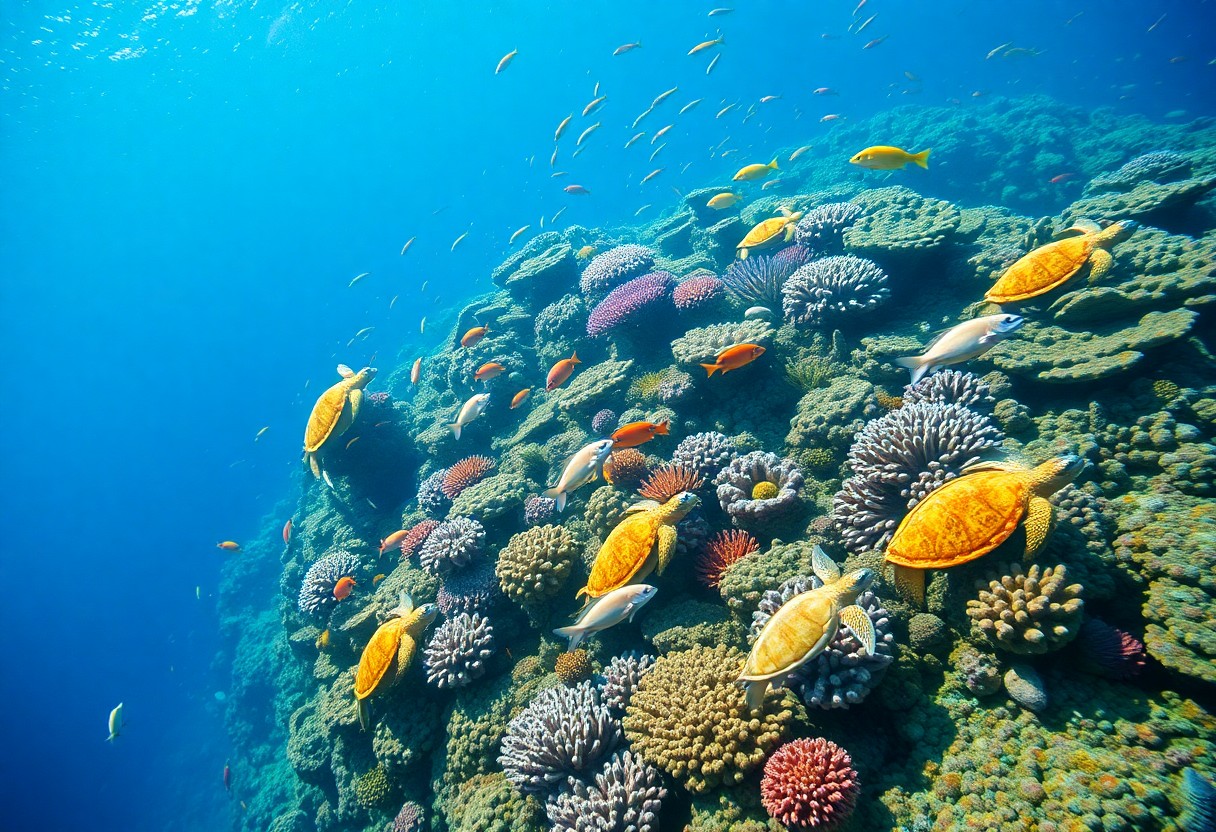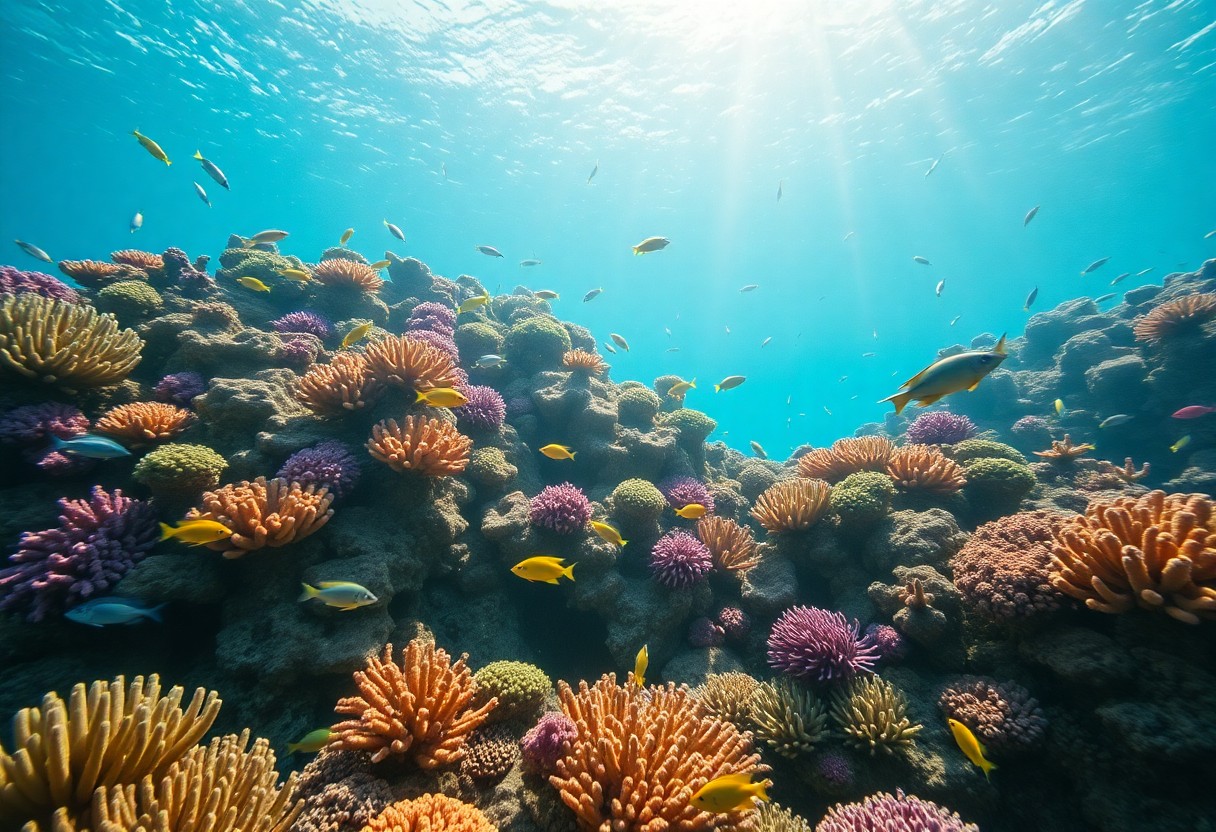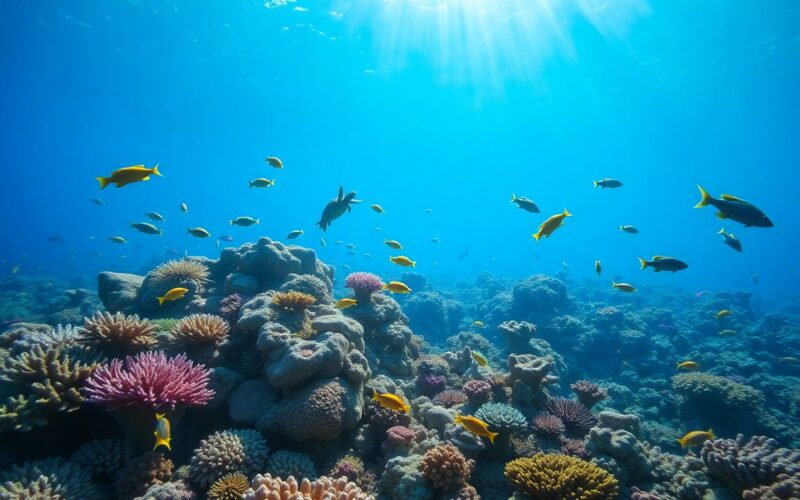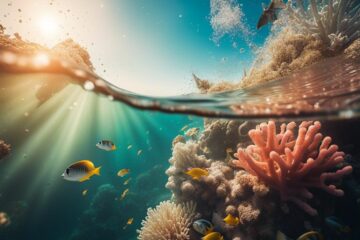You have the power to make a difference in the fight for marine life and the health of our oceans. As human activities continue to threaten delicate ecosystems, understanding the importance of ocean conservation becomes crucial. By advocating for sustainable practices and supporting initiatives aimed at protecting our waters, you contribute to the survival of countless marine species and the overall balance of life on Earth. This blog post will explore how your actions, no matter how small, can play a vital role in preserving our oceans for future generations.
Table of Contents
Key Takeaways:
- Effective ocean conservation efforts help to restore and maintain biodiversity, ensuring the survival of various marine species and habitats.
- Reducing pollution and overfishing through sustainable practices is vital for the health of marine ecosystems, allowing them to thrive and regenerate.
- Marine protected areas play a significant role in safeguarding vulnerable species and habitats from human activities, offering safe zones for recovery and growth.
- International cooperation and policy-making are necessary to address transboundary marine issues, promoting unified efforts toward ocean health.
- Public awareness and education about ocean conservation can drive community involvement and support for initiatives aimed at protecting marine ecosystems.

Understanding Marine Ecosystems
A comprehensive understanding of marine ecosystems is vital to appreciating the intricate balance that sustains them. These ecosystems encompass various life forms, from microscopic phytoplankton to the largest whales, all interacting within a complex web of relationships. According to a Study: Protecting the ocean benefits people and nature, marine ecosystems provide necessary services that not only support marine life but also benefit human well-being, including resources such as food, tourism, and climate regulation.
Definition and Importance
One of the defining features of marine ecosystems is their sheer diversity and the myriad roles they play in maintaining a healthy planet. They encompass various habitats, such as coral reefs, mangroves, and deep-sea environments, each contributing to the overall health of the ocean. These ecosystems are not just home to fish and wildlife; they also act as critical buffers against climate change, absorbing carbon dioxide and mitigating the effects of severe weather.
Key Components of Marine Ecosystems
Beside the obvious elements like the ocean water and the organisms within it, marine ecosystems have key components that play a significant role in their functionality. These include nutrients, sunlight, and physical structures like coral reefs and seaweed beds. Together, these elements work in harmony to support a vibrant array of life forms, ensuring the system’s resilience against environmental changes.
And when you consider the interactions among various species and their habitats, you can better appreciate the delicate balance that sustains marine life. For example, coral reefs offer shelter and food to countless fish species, while nutrient-rich waters can support productive fisheries that rely on the energy captured by primary producers like phytoplankton.
Biodiversity in Marine Environments
Behind the beauty of marine ecosystems lies an astonishing level of biodiversity. You’ll find a staggering variety of organisms, each playing a unique role within its ecosystem. The biodiversity of marine life is necessary for ecosystem resilience, as it contributes to the array of services provided, such as maintaining water quality and providing seafood for millions of people around the world.
Biodiversity fosters not only ecological balance but also contributes to the economy through fisheries and tourism. Protecting the multitude of species found in these environments ensures that their ecological roles are fulfilled, leading to healthier oceans that can better withstand the pressures of climate change and human activity.
Interdependence among Marine Species
Species in marine ecosystems are interconnected, with each relying on others for survival. You should pay attention to these interdependencies, as they exemplify the balance that keeps marine ecosystems thriving. Predators, prey, and symbiotic relationships between different species highlight how interconnected these environments are. A shift in one species can lead to ripple effects throughout the entire ecosystem.
With healthy interspecies relationships, marine environments can thrive and recover from disturbances. The loss or decline of even a single species can upset this balance, leading to instability and further loss of biodiversity. By understanding these interdependencies, you can appreciate why ocean conservation is so important for protecting not just marine life, but the overall health of our planet.

Threats to Marine Life
Even though oceans cover more than 70% of our planet, they are facing unprecedented threats that jeopardize the delicate balance of marine ecosystems. These threats stem from human activity, and it is necessary for you to understand them to appreciate the necessity of The Importance of Ocean Conservation: Preserving Marine Life. By protecting our oceans, you’re not just conserving marine species but also ensuring the health of the planet as a whole. Let’s explore some of the primary threats that marine life faces today.
Overfishing and Its Impacts
After decades of unchecked fishing, many fish populations have plummeted to alarming levels, with some species facing the brink of extinction. Overfishing leads to a *devastating imbalance* in marine ecosystems, impacting not just the targeted species but also their predators and prey. When you consider that approximately 90% of the world’s fish stocks are either fully exploited or overexploited, it becomes clear that immediate action is necessary to ensure sustainability.
Moreover, overfishing disrupts entire food webs, which can exacerbate other environmental issues like *habitat destruction* and *pollution*. If this trend continues, you might witness the collapse of various fish species, greatly affecting fishing communities and food security globally. Taking steps towards sustainable fishing practices is vital for the health of our oceans and your role in advocating for such practices can make a significant difference.
Pollution and Toxic Runoff
Before we dive deeper into the threats faced by marine ecosystems, it’s necessary to address the issue of pollution, which comes in various forms, including plastic waste, chemicals, and agricultural runoff. The *toxins* carried by rainwater and rivers eventually find their way into the oceans, harming marine life and ecosystems. This contamination can have serious consequences, affecting both aquatic organisms and human health through the seafood we consume.
Toxic runoff, especially from agricultural practices, often contains fertilizers and pesticides that lead to algal blooms. These blooms can deplete oxygen levels in the water, creating *dead zones* where marine life cannot survive. An understanding of how pollution affects your oceans enables you to advocate for cleaner practices and policies aimed at reducing contaminants entering marine habitats.
Climate Change and Ocean Acidification
Runoff from polluted areas contributes significantly to the challenges posed by climate change, which affects ocean temperatures and acidity levels. As *carbon dioxide* is absorbed by seawater, it alters the water’s chemistry, leading to ocean acidification. This changes the conditions necessary for marine organisms, particularly those that rely on calcium carbonate, like *coral reefs* and shellfish, to thrive.
Due to ongoing climate change effects, you could witness shifts in marine species distributions and a decline in biodiversity within the ecosystem. Warmer waters can also lead to increased bleaching events in coral reefs, further endangering these crucial marine habitats. Your awareness and participation in initiatives aimed at combating climate change can contribute to protecting marine ecosystems and ensuring their resilience.
Habitat Destruction
The destruction of critical habitats such as coral reefs, mangroves, and seagrass beds is a significant threat to marine life and ecosystems. Human activities such as coastal development, bottom trawling, and pollution contribute immensely to this problem. These habitats serve as nursery grounds for many marine species, so their destruction leads to population declines and *species loss*, severely affecting biodiversity and ecological balance.
Indeed, habitat destruction not only affects marine fauna but also compromises the livelihoods of humans who depend on these ecosystems for sustenance and economic activities. Advocating for the conservation of these necessary habitats is critical for both marine life and your own community’s well-being.
Invasive Species
An even more complicated threat to marine life is posed by invasive species, which often outcompete native species for resources and can destabilize entire ecosystems. These species can be introduced either intentionally or accidentally, substantially altering the dynamics of marine environments in ways that are often detrimental to native populations.
Impacts of invasive species can include reduced biodiversity and altered habitats, leading to *economic consequences* for fisheries and coastal tourism. Understanding how invasive species pose threats to marine ecosystems enables you to support measures that prevent their spread and promote the health of your local marine environments.
The Role of Ocean Conservation
Despite the vastness of the oceans, marine ecosystems are facing unprecedented threats due to human activities, including pollution, overfishing, and climate change. You may wonder how ocean conservation can address these challenges effectively. The focus of Marine conservation lies in creating strategies that protect and restore marine environments while ensuring the sustainability of its resources for future generations.
Definition and Objectives of Ocean Conservation
One of the primary objectives of ocean conservation is to protect biodiversity, which includes a myriad of marine species and habitats. This protection is imperative not only for maintaining healthy ecosystems but also for the livelihoods of coastal communities that depend on these resources. You should consider that engaging in conservation efforts can lead to a more balanced ecosystem where species can thrive, and human interests can be harmonized with nature.
Another objective of ocean conservation is to mitigate the impacts of human activities on marine environments. This can be achieved through various strategies, including regulations and community engagement. As you participate in these initiatives, you contribute to a greater cause that prioritizes the health of our oceans, helping them to recover from past damage and enabling future sustainability.
Marine Protected Areas (MPAs)
Role of Marine Protected Areas (MPAs) in conservation is vital. These designated regions allow ecosystems to regenerate by limiting human exploitation and reducing negative impacts. By establishing MPAs, you contribute to the preservation of critical habitats and promote biodiversity. These areas provide a sanctuary for marine life, allowing fish populations to recover and marine habitats to flourish.
Areas with established MPAs often demonstrate increased fish stocks and improved ecosystem health, which can lead to enhanced fishing opportunities outside these protected zones. This illustrates how you can have a direct influence on both local fisheries and broader ocean conservation efforts by advocating for or supporting the creation of MPAs in your community or region.
Sustainable Fishing Practices
Role of sustainable fishing practices is fundamentally important for maintaining the balance between human demands and marine health. By adopting methods that reduce overfishing and ensure the longevity of fish populations, you help to preserve ecosystems necessary for various species to thrive. Through education and advocacy, you can promote responsible fishing practices and support local initiatives focused on sustainability.
Further, engaging with local fisheries and communities interested in sustainable practices can make a significant difference. By choosing to purchase seafood that is sustainably sourced, you play a crucial role in driving demand for practices that do not harm marine ecosystems. This consumer choice is powerful and can encourage wider industry shifts towards sustainability.
Restoration of Marine Habitats
Before effective conservation can take place, understanding the importance of restoring marine habitats is imperative. Habitats such as coral reefs, mangroves, and seagrasses not only provide shelter and breeding grounds for numerous species but also offer critical ecosystem services, such as carbon sequestration and coastal protection. Involving yourself in habitat restoration efforts can support the revival of these vital ecosystems.
Even small local efforts can lead to significant impacts. Participating in beach clean-ups, helping to plant new coral, or restoring mangrove forests can foster healthier environments. Your involvement teaches others the value of protecting marine habitats and contributes to long-term ecological balance.
Policy and Governance in Ocean Conservation
Fishing laws and governance structures are vital components of ocean conservation. Effective policies guide sustainable practices and protect marine environments from overexploitation and degradation. Engaging with policymakers and advocating for responsible legislation can directly affect the health of marine ecosystems. You are an important part of this process, as your voice can contribute to better governance.
With collaborative efforts among governments, NGOs, and local communities, policies can be implemented that address the pressing issues facing our oceans. By staying informed and involved, you can help ensure that future policies not only protect marine life but also promote sustainable practices that benefit both the environment and your community.
Strategies for Conservation
Many strategies are instrumental in promoting ocean conservation and ensuring the protection of marine life and ecosystems. These strategies not only help preserve biodiversity but also empower communities, researchers, and organizations to collaborate towards a common goal. By adopting these approaches, you can contribute to a sustainable future for our oceans.
Community Engagement and Education
Among the most effective strategies for ocean conservation is fostering community engagement and education. When you actively involve local communities in conservation efforts, you create a sense of ownership and responsibility towards the marine environment. Educational programs can help raise awareness about the importance of protecting marine ecosystems, which can lead to more sustainable practices among fishers, tourism operators, and residents. By participating in workshops and community initiatives, you can become an advocate for marine conservation.
Moreover, education empowers you to make informed decisions about your interactions with the ocean. By understanding the impact of overfishing, pollution, and climate change on marine life, you can change your lifestyle to support conservation efforts. Involvement at the grassroots level ensures that conservation strategies are culturally sensitive and effective, as local knowledge and customs often play a significant role in successful implementation.
Research and Monitoring
Beside community engagement, research and monitoring are necessary components of ocean conservation. Engaging in scientific research allows you to assess the health of marine ecosystems and the impacts of human activity. By tracking important indicators like fish populations, water quality, and habitat changes, you gain valuable insights into the challenges facing our oceans and can develop informed solutions to address them.
Monitoring efforts involve both technological and community-driven approaches. Engaging citizen scientists, including yourself, can enhance data collection and expand research reach. This collaboration not only aids scientific understanding but also increases community investment in the outcomes of conservation work.
Monitoring efforts are vital to adapt conservation strategies based on observed changes in marine ecosystems. By systematically gathering data, you can identify trends and respond proactively to emerging threats, whether it be from climate change, habitat degradation, or pollution. For you, understanding these dynamics is necessary in contributing to both local and global conservation initiatives.
Partnerships with NGOs and Governments
Monitoring cannot be effective in isolation; it requires partnerships with NGOs and governments to ensure comprehensive conservation efforts. When you collaborate with established organizations, you can leverage resources, expertise, and networks that enhance your impact. NGOs often provide training, funding, and advocacy support, which are necessary for implementing and sustaining conservation projects.
These partnerships enable a more extensive reach for conservation projects and help facilitate the sharing of best practices and innovations in marine management. Additionally, engaging with government agencies can help you advocate for stronger policies that protect marine ecosystems, ensuring that the voices of local communities are heard in the decision-making processes.
But forming successful partnerships can require commitment and communication. Establishing clear goals and responsibilities among all stakeholders will ensure that everyone is aligned in their conservation objectives. This cooperative approach is critical for you to build lasting solutions that effectively address the myriad threats facing our oceans.
Innovative Technologies in Conservation
Partnerships also pave the way for utilizing innovative technologies in conservation. Advancements in technology, such as remote sensing and underwater drones, enable you to gather data more efficiently and gain insights into marine ecosystems that were previously inaccessible. These technologies help monitor biodiversity, track marine species movements, and detect changes in ocean conditions rapidly.
Moreover, the use of artificial intelligence and data analytics can assist in predicting trends and assessing the effectiveness of conservation efforts over time. By integrating these technologies into your conservation strategies, you can respond more effectively to challenges, improve resource management, and ultimately protect marine life.
Hence, you should embrace the role of technology in conservation practices. As you become more familiar with these innovations, you’ll find that they can make a significant difference in your ability to contribute to marine protection, promoting resilience amidst the rapid changes occurring in our oceans.
Success Stories in Ocean Conservation
Once again, the importance of ocean conservation has been highlighted by various successful initiatives that showcase the positive impact of dedicated efforts to protect marine life and ecosystems. These success stories not only inspire hope but also serve as powerful examples of what can be achieved when communities and organizations come together to safeguard the ocean’s fragile environments. You have the opportunity to learn from these initiatives, which underline the effectiveness of marine protected areas, species recovery programs, and lessons drawn from global conservation efforts.
Case Studies of Effective Marine Protected Areas
The establishment of marine protected areas (MPAs) has proven to be an effective strategy in enhancing the resilience of ocean ecosystems. These zones are designed to allow marine life to thrive, ultimately leading to increased biodiversity and healthier habitats. Consider the following remarkable case studies where MPAs have significantly improved marine health:
- Great Barrier Reef, Australia: Designated as a World Heritage Site, it saw an increase in fish populations by up to 30% in protected zones since the MPA’s establishment.
- Gulf of California, Mexico: This area has shown a 200% increase in the population of sea turtles thanks to the protective measures implemented in key sites.
- Chagos Archipelago, UK: An MPA covering over 200,000 square miles, has led to a resurgence of coral reefs, witnessing a decrease in coral bleaching incidents.
- Papahānaumokuākea, Hawaii: Established in 2016, it has resulted in the recovery of endemic species such as the Hawaiian Monk Seal, with population growth of nearly 50% in certain areas.
These case studies clearly illustrate how MPAs contribute to the recovery and sustainability of marine ecosystems, giving hope for the future of our oceans and the myriad of species that inhabit them.
Successful Species Recovery Initiatives
Beside the impact of MPAs, numerous species recovery initiatives have made headlines for their success in revitalizing populations that were once on the brink of extinction. Conservation programs focusing on specific threatened species have demonstrated how targeted interventions can reverse declines. You should consider the following examples:
Another notable instance is the recovery of the California Sea Lion, which, through protections enforcing sustainable fishing practices, has seen its population bounce back from just a few thousand individuals to over 300,000 today. Similarly, the coho salmon has benefited from habitat restoration projects and stricter regulations on water quality, leading to a population increase of more than 200% in some areas. Species like the Eastern Pacific gray whale have also prospered due to international protections, demonstrating that concerted efforts yield substantial outcomes.
Lessons Learned from Global Conservation Efforts
Lessons from successful global conservation efforts show that collaboration, scientific research, and community engagement are key to sustaining the health of marine ecosystems. International partnerships have revealed the importance of involving local communities in conservation strategies. You can see how these lessons have translated into actionable strategies worldwide.
Success in ocean conservation involves adapting to challenges through a flexible approach that integrates scientific findings with local knowledge. Understanding the significance of a multi-faceted approach, leveraging technology for monitoring, and sharing success stories can empower other regions to replicate similar victories. Ultimately, these lessons not only provide a blueprint for future initiatives but also emphasize that when you invest in your oceans, the results can profoundly benefit both the environment and humanity.

The Importance of Public Awareness
Unlike many environmental issues, ocean conservation demands a high level of public awareness to drive change. Your understanding and engagement can influence policy, transform consumption habits, and foster a deeper connection with marine ecosystems. When you recognize the significance of healthy oceans, you not only contribute to the protection of marine life but also advocate for a sustainable future that benefits both humanity and the ocean.
The Role of Media in Ocean Conservation
Before plunging into actions we can take, it’s necessary to understand how media shapes public perception of ocean conservation. Documentaries, articles, and social media campaigns play a vital role in highlighting the challenges faced by our oceans. These platforms can reveal the beauty of marine environments and the urgency of their preservation, thereby inspiring many, including you, to take part in conservation efforts.
Furthermore, the media holds the power to amplify the voices of scientists, activists, and communities who depend on healthy oceans. By showcasing personal stories and striking visuals, coverage of marine conservation issues can create an emotional connection that prompts positive action. You can utilize these resources not only to grow your knowledge but also to spread the word to others in your community.
Engaging the Next Generation
Between educating youth about marine ecosystems and fostering a sense of responsibility for the water that covers our planet, engaging the next generation is vital. Schools, families, and organizations play a significant role in imparting knowledge on the importance of ocean health, allowing young people to understand their impact on marine life. This sense of stewardship can ignite their passion for conservation and advocacy, leading to innovative solutions for our oceans.
With programs focused on hands-on learning experiences like beach clean-ups, interactive workshops, and marine science education, you can help inspire younger generations. Developing a personal connection with the ocean will empower them to voice their concerns regarding environmental issues and seek protective measures for marine ecosystems in the future. This fosters a culture of awareness that can sustain long-term conservation efforts.
Advocacy and Activism for Marine Conservation
Above all, advocacy and activism serve as powerful tools in promoting ocean conservation. By joining various campaigns and initiatives, you can raise your voice against threats such as plastic pollution, overfishing, and climate change. Your actions can galvanize others to recognize the urgent need for change, leading to a collective response that can significantly influence policy-making and foster responsibility towards marine environments.
Moreover, participating in local conservation groups allows you to engage with like-minded individuals who share a commitment to protecting marine ecosystems. These interactions can enhance your understanding of the issues at hand and empower you to take meaningful action. By becoming an advocate for ocean health, you help forge pathways to protect our oceans for future generations.
Public support and activism play a fundamental role in driving legislative changes aimed at protecting marine life. Your involvement in campaigns or advocacy efforts can amplify voices calling for immediate action, ensuring that marine conservation remains a priority in the public discourse. As part of this movement, you not only contribute to global awareness but also encourage others to join in, creating a ripple effect of positive change.
Summing up
As a reminder, your involvement in ocean conservation is vital for protecting marine life and the delicate ecosystems that exist beneath the waves. Every action you take—whether it’s reducing plastic use, supporting sustainable seafood choices, or advocating for marine protected areas—can have a significant impact. By making conscious decisions and raising awareness, you help to create a collective force that contributes to healthier oceans, which are imperative for the survival of countless species and the well-being of our planet.
Your engagement in ocean conservation not only benefits marine ecosystems but also ensures that future generations can enjoy the beauty and bounty of the sea. By fostering a sense of responsibility towards our oceans, you empower yourself and those around you to be stewards of these vital resources. Together, we can cultivate a sustainable future where marine life thrives, ecosystems flourish, and the balance of nature is preserved.
FAQ
Q: Why is ocean conservation important for marine life?
A: Ocean conservation is vital for marine life as it helps maintain biodiversity and ensures the survival of various species. Healthy oceans support food chains and ecosystems, which are fundamental for the overall health of the planet. Protecting marine habitats such as coral reefs, mangroves, and seagrass beds is crucial, as they provide shelter and breeding grounds for numerous marine organisms.
Q: What are the main threats to marine ecosystems?
A: Marine ecosystems face several significant threats, including overfishing, pollution (such as plastics and chemicals), climate change, and habitat destruction. These factors lead to the decline of fish populations, coral bleaching, and the loss of biodiversity, impacting both the marine environment and the services it provides to humans.
Q: How does ocean conservation impact climate change?
A: Healthy oceans play a crucial role in mitigating climate change by acting as carbon sinks. They absorb and store carbon dioxide from the atmosphere, which helps regulate global temperatures. By conserving marine ecosystems, we enhance their capacity to sequester carbon, thus contributing to climate stability and reducing the severity of climate-related issues.
Q: What role do marine protected areas play in conservation?
A: Marine protected areas (MPAs) are designated regions where human activities are restricted or managed to preserve marine ecosystems. These areas are critical for the recovery of overfished populations, the protection of habitats, and the enhancement of biodiversity. MPAs can act as safe havens for marine species, allowing ecosystems to regenerate and thrive.
Q: How can individuals contribute to ocean conservation?
A: Individuals can play a significant role in ocean conservation by reducing plastic usage, participating in beach clean-ups, advocating for sustainable seafood choices, and supporting marine conservation organizations. Furthermore, spreading awareness about marine issues and educating others can foster a community committed to ocean protection.
Q: What impact does pollution have on marine ecosystems?
A: Pollution severely impacts marine ecosystems by affecting water quality, harming marine life, and disrupting food webs. Chemicals and waste discharge can lead to toxic conditions, causing illness or death in marine organisms. Additionally, plastics can cause entanglement, ingestion, and habitat destruction, posing long-term threats to biodiversity.
Q: Why is public awareness important for ocean conservation efforts?
A: Public awareness is crucial for fostering support for ocean conservation initiatives. When people understand the importance of marine biodiversity and the threats posed by human activities, they are more likely to take action. Awareness campaigns can influence policies, encourage sustainable practices, and inspire collective efforts to protect the oceans, thus amplifying the impact of conservation measures.

Our contributing author is a passionate advocate for eco-friendly living and sustainability. With a background in eco-life, they are dedicated to inspiring and empowering individuals to adopt environmentally conscious lifestyles. Through insightful articles, they share practical tips, innovative solutions, and thought-provoking perspectives to promote a greener, more sustainable world. Join them on the journey towards eco-smart living and discover how small choices can make a big impact. 🌱









